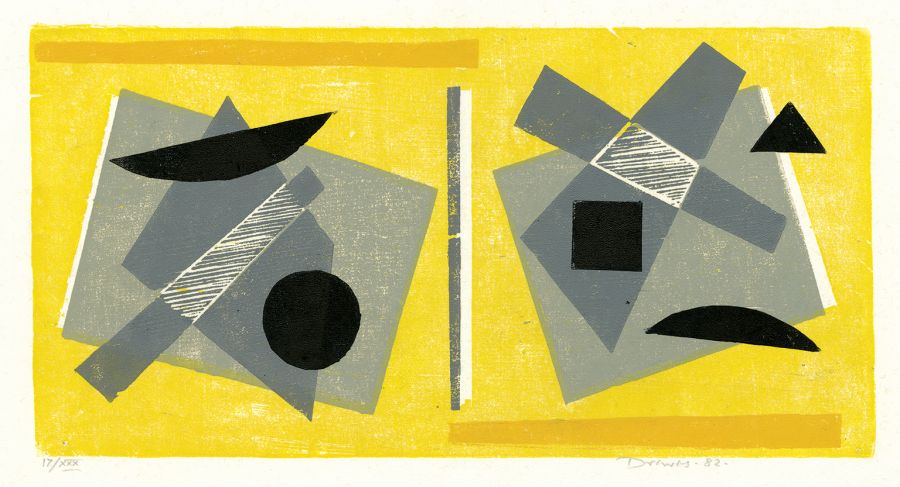Werner Drewes, 'Twin Formation in Gray', color woodcut, 1982, edition 30, Rose III.400. Signed, dated, and numbered 'I7/XXX' in pencil, annotated '415' and titled in the bottom left sheet edge. A fine impression with fresh, rich colors, on heavy off-white Japan paper; the full sheet with wide margins (1 3/4 to 3 1/4 inches), in excellent condition. Printed in black, dark gray, medium gray, yellow/orange, and lemon yellow.
An impression of this work is included in the permanent collection of the Smithsonian American Art Museum.
ABOUT THE ARTIST
Painter, printmaker, and art teacher, Werner Drewes (1899–1985) was among the founding fathers of American abstraction.
A student at the famed Bauhaus in the 1920s, he studied under Lyonel Feininger, Paul Klee, Laszlo Moholy-Nagy, and Wassily Kandinsky. Following his emigration to the United States in 1930, he was instrumental in introducing modernist Bauhaus concepts and esthetics to America.
Drewes’ boldly dynamic and emotionally expressive work, which encompassed both non-objective and figurative genres, brought him critical acclaim and numerous gallery and institutional exhibitions throughout his artistic career.
An impression of this work is included in the permanent collection of the Smithsonian American Art Museum.
ABOUT THE ARTIST
Painter, printmaker, and art teacher, Werner Drewes (1899–1985) was among the founding fathers of American abstraction.
A student at the famed Bauhaus in the 1920s, he studied under Lyonel Feininger, Paul Klee, Laszlo Moholy-Nagy, and Wassily Kandinsky. Following his emigration to the United States in 1930, he was instrumental in introducing modernist Bauhaus concepts and esthetics to America.
Drewes’ boldly dynamic and emotionally expressive work, which encompassed both non-objective and figurative genres, brought him critical acclaim and numerous gallery and institutional exhibitions throughout his artistic career.



